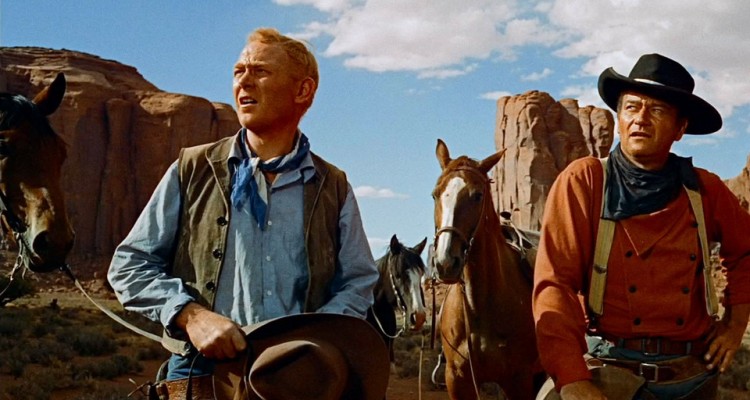How Hollywood Whitewashed the Old West
For decades, the film industry has obscured the role people of color played in the American frontier. Today, movies are trying to reckon with that past.
As movie genres go, the Western is a workhorse. It draws from a well of cultural symbols meant to capture the essence of America, including the freedom of the open frontier and the righteous self-determination of man. Standing tall inside this cinematic shorthand is the cowboy himself, a figure commonly understood to be an excellent shot who rides horses and who, above all, is white. This narrow image is foundational to the genre, which includes films such as John Sturges’s 1960 classic The Magnificent Seven. A retelling of Akira Kurosawa’s Seven Samurai, the movie centers on a group of seven white men hired to protect a Mexican village being terrorized by a band of outlaws.
But a new adaptation of the film offers a notably different set of heroes. Directed by Antoine Fuqua and starring Denzel Washington, the 2016 version centers around a team of misfits trying to defend a town built around a gold mine. In addition to Washington, the “seven” include Byung-hun Lee, Manuel Garcia-Rulfo, and Martin Sensmeier—all of whom subvert the conventional idea of the Western hero. But if anything, this subversion brings the movie closer to history: The Old West and the iconic cowboys who populate it in movies were never solely white to begin with. In recent years, filmmakers have grappled with this reality to varying degrees of success. Despite the admirable efforts of Westerns such as The Revenant and The Magnificent Seven, movies like Django Unchained, The Keeping Room, The Lone Ranger, and Bone Tomahawk all show how difficult it is to modernize the genre without continuing to peddle an inaccurate and exclusionary account of American history.
Cowboy culture refers to a style of ranching introduced in North America by Spanish colonists in the 16th century—a time when most ranch owners were Spanish and many ranch hands were Native. None of the first cowboys were (non-Hispanic) white. And while historians don’t know exact figures, by the late 19th century roughly one in three cowboys (known as vaqueros) was Mexican. The recognizable cowboy fashions, technologies, and lexicon—hats, bandanas, spurs, stirrups, lariat, lasso—are all Latino inventions.
White Americans wouldn’t be exposed to, and subsequently incorporate, cowboy culture into their ranching practices until 200 years after its inception, once westward expansion brought Anglo-colonists and African slaves into the area in the early 1800s. At that time, cowboys did the kind of hard labor that wealthy white Americans would often force others to do, meaning many were black slaves. Around this same time, the frontier was also populated by roughly 20,000 Chinese immigrants who contributed significantly to the development of the West, including the construction of the first Transcontinental Railroad. In other words, people of color were not only present at the inception of the Wild West—but they were also its primary architects. And yet, even today, black cowboys are fighting for recognition.


Leave a Reply